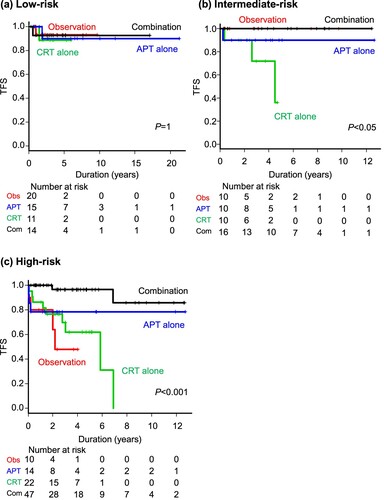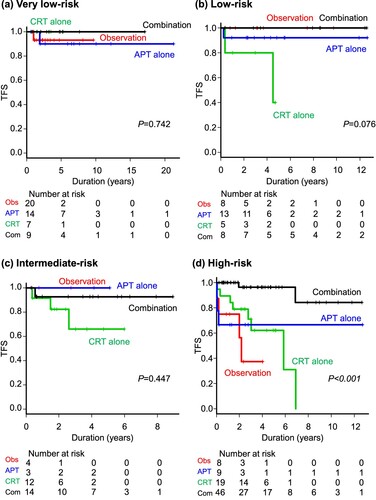Figures & data
Table 1. Patient characteristics according to different treatment groups.
Table 2. Details of thrombotic events occurring in different treatment groups during the follow-up period.
Table 3. Frequency of thrombotic events in ET patients in different risk groups according to treatment approaches.
Figure 1. Impact of different treatment approaches on thrombosis-free survival (TFS) in patients stratified by the conventional risk model. Low- (a) and high-risk patients (b) are shown. Treatment groups consisted of observation (Obs), antiplatelet monotherapy (APT alone), cytoreductive monotherapy (CRT alone), and combination therapy (Com).

Figure 2. Impact of different treatment approaches on thrombosis-free survival (TFS) in patients stratified by the IPSET-thrombosis risk model. Low- (a), intermediate- (b), and high-risk patients (c) are shown. Treatment groups consisted of observation (Obs), antiplatelet monotherapy (APT alone), cytoreductive monotherapy (CRT alone), and combination therapy (Com).

Figure 3. Impact of different treatment approaches on thrombosis-free survival (TFS) in patients stratified by the revised IPSET-thrombosis risk model. Very low- (a), low- (b), intermediate- (c), and high-risk patients (d) are shown. Treatment groups consisted of observation (Obs), antiplatelet monotherapy (APT alone), cytoreductive monotherapy (CRT alone), and combination therapy (Com).

